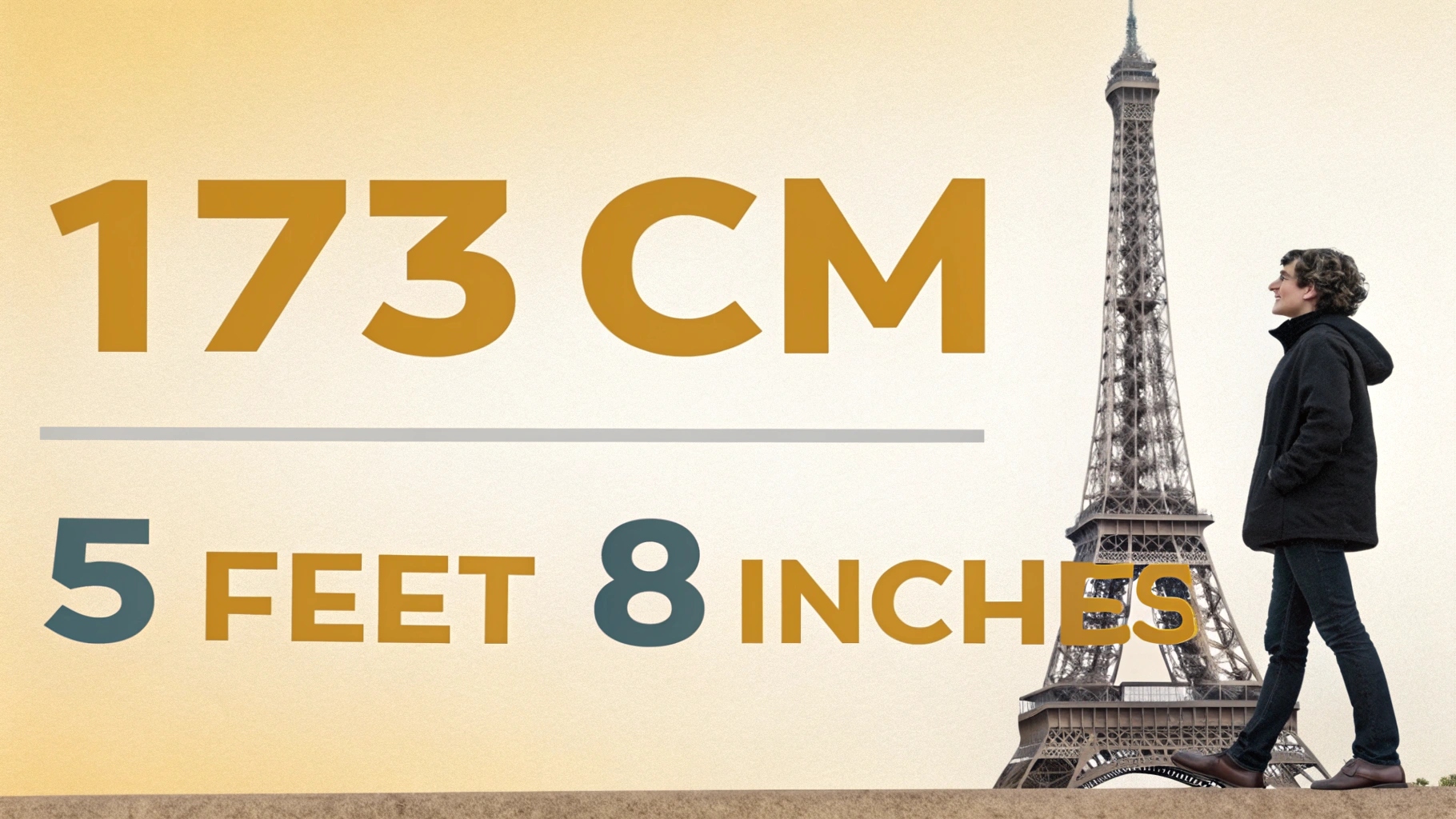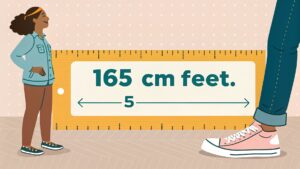Height is an important physical characteristic that varies across individuals and cultures.
With different countries using different measurement systems, converting height from centimeters to feet can be a common challenge. For instance, 173 cm is often a point of curiosity for those unfamiliar with the metric system.
This article will explore how tall 173 cm is in feet and offer insights into global height averages. Additionally, we will cover common conversion methods and answer frequently asked questions related to height.
How Tall is 173 cm in Feet?
To convert 173 cm to feet, we need to know the basic conversion factors:
- 1 inch = 2.54 cm
- 1 foot = 12 inches
Step 1: Convert 173 cm to inches
First, we need to convert centimeters to inches. Since there are 2.54 centimeters in an inch, we divide 173 cm by 2.54 to find the number of inches.Inches=1732.54≈68.11 inches\text{Inches} = \frac{173}{2.54} \approx 68.11 \text{ inches}Inches=2.54173≈68.11 inches
Step 2: Convert inches to feet
Now that we know the height in inches, we can convert inches to feet. Since there are 12 inches in a foot, we divide the total number of inches by 12.Feet=68.1112≈5.676 feet\text{Feet} = \frac{68.11}{12} \approx 5.676 \text{ feet}Feet=1268.11≈5.676 feet
Therefore, 173 cm is approximately 5 feet 6.76 inches.
Understanding 173 cm in Context
Average Height Worldwide
To provide some perspective, 173 cm (or 5 feet 6.76 inches) is often considered to be an average height for adults in many countries. In countries like the United States, the United Kingdom, and Canada, average male heights are generally between 5 feet 9 inches (175 cm) and 5 feet 10 inches (178 cm), so 173 cm is slightly below average for men. However, for women, it is closer to the average height in many countries, as the global average height for adult women is often around 5 feet 3 inches (160 cm).
Height and Perception
Height can affect a person’s perception in many ways. Socially, taller individuals might be perceived as more authoritative or capable, especially in Western cultures, though this varies greatly from culture to culture. In some Asian cultures, being 173 cm tall may be viewed as above average, while in Nordic or Western European countries, where the average height tends to be higher, 173 cm might be closer to average or even below average.
Additionally, there is a psychological effect related to how one feels about their height. Many people with heights around 173 cm (5’7”) may feel satisfied with their height, while others may desire to be taller or shorter, depending on societal standards and personal preferences.
How do I convert 173 cm to inches?
To convert 173 cm to inches, you need to divide the number of centimeters by 2.54, since 1 inch equals 2.54 cm.
So, divide 173 by 2.54: 173 cm÷2.54=68.11 inches173 \, \text{cm} ÷ 2.54 = 68.11 \, \text{inches}
Therefore, 173 cm is approximately 68.11 inches.
This conversion allows you to understand your height in inches if you’re more familiar with the imperial system.
Is height linked to genetics or environment?
Height is influenced by both genetics and environmental factors. Genetics plays the primary role, as a person’s height is largely determined by the genes inherited from their parents. However, environmental factors like nutrition, health during childhood, and physical activity can also impact growth. Proper nutrition, especially during the growth years, can help an individual reach their full potential height. Illness or malnutrition during critical growth periods can stunt growth. Additionally, physical activity and regular exercise, especially weight-bearing exercises, may promote growth. Thus, while genetics sets the baseline, environmental factors can help optimize or limit height development.
FAQs
How do I convert 173 cm to feet without a calculator?
To convert 173 cm to feet without a calculator, divide by 2.54 to get inches, then divide by 12 to get feet.
FAQ 2: How can I convert 173 cm into other units of measurement?
173 cm is equivalent to 1.73 meters, 1,730 millimeters, and 68.11 inches.
FAQ 3: Why is height measured in feet in some countries?
Countries like the U.S. and UK use feet due to the historical use of the imperial system before adopting the metric system.
FAQ 4: What is the average height for men and women in feet?
The global average height for men is around 5 feet 7 inches, while for women it is about 5 feet 3 inches.
FAQ 5: Is 173 cm tall for a woman?
For women, 173 cm (about 5’8″) is considered tall, especially in countries with shorter average heights.
FAQ 6: How do I convert 173 cm to meters?
To convert 173 cm to meters, divide by 100: 173 cm = 1.73 meters.
FAQ 7: What is the average height in different countries?
In the U.S., the average male height is 5’9″ (175 cm), while in the Netherlands, it’s around 6’0″ (183 cm).
FAQ 8: Is there a significant difference in height between men and women?
Yes, men are generally taller, with an average height of 5’7″ compared to 5’3″ for women.
FAQ 9: How do I calculate my height in feet if I only know my height in inches?
Divide your height in inches by 12 to get your height in feet. For example, 68 inches ÷ 12 = 5 feet 8 inches.
FAQ 10: How tall is 173 cm in feet and inches?
173 cm is approximately 5 feet 6.76 inches, commonly rounded to 5 feet 7 inches.
Conclusion
Converting 173 cm to feet gives us approximately 5 feet 6.76 inches, which is often rounded to 5 feet 7 inches.
This height is considered average to slightly tall, depending on the region. Understanding height measurements and conversions is essential, especially when navigating between different systems like centimeters and feet. The average height varies globally, and factors like culture and genetics influence perceptions of height.
By mastering simple conversion methods, you can easily understand and communicate height in any system. Ultimately, height is just one of many ways we can appreciate our unique characteristics.
















+ There are no comments
Add yours